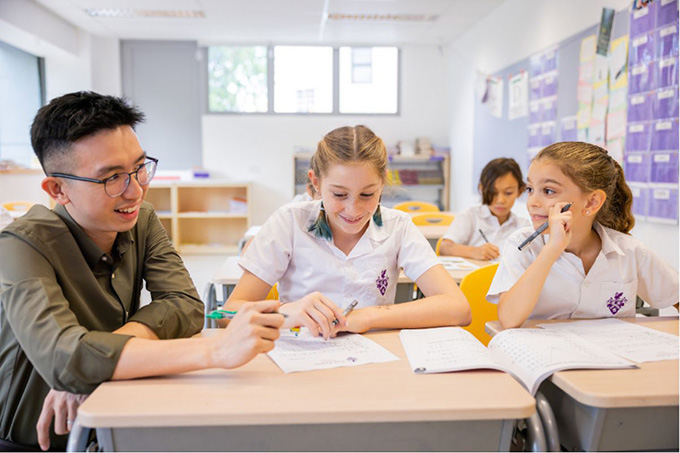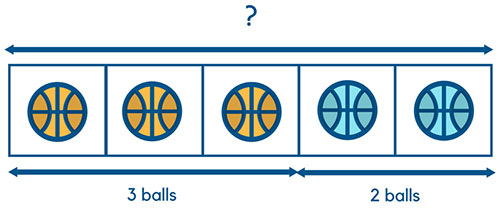
Tuesday December 5, 2023, communicating on the results of French students in the international PISA survey, the Minister of National Education Gabriel Attal proposed revising primary school curricula to gradually adopt the Singapore method, seen as a remedy for the “level” considered too low in mathematics.
Can the objective of improving the performance of French students in mathematics really be achieved through the dissemination of this method? Could it actually be indifferent, or even counterproductive?
Can we really call it the Singapore method?
What is called Singapore Method refers both to a geographical reality, that of a city-state of 720 km2 , with 181 primary schools, and an educational realityimposing strong pressure on students. Since the 1980s, Singapore’s mathematics curriculum has centered around two elements: problem solving; on the other hand an approach summarized by the triptych “Concrete – Imaged – Abstract” aiming to support the transition from concrete to abstract via the manipulation of material or schematization.
In terms of content, the Singapore mathematics curriculum is actually quite similar to those of other countries around the world, but its particularity is to allow a certain flexibility of application, thanks to suggestions offered to teachers so that they can adapt it in their classes. Furthermore, Singapore teachers are highly qualified and work in schools that are very well equipped with educational resources.
The Singapore mathematics curriculum does not claim to have a method per se. To our knowledge, no research provides precise information onthe extent of institutional prescriptions, on uses and adaptations in class, and therefore on its effectiveness.
In other words, in the current state of studies, the expression “Singapore Method”, exported or generalized outside of Singapore, seems to be more of a verbal fetish than a method evaluated according to scientific canons.
Represent a problem using diagrams
The institutional publications of the MENJ mainly retain two elements: the “Concrete-Imaged-Abstract” approach and a tool, “the bar diagram”. Concerning this approach, it is not foreign to French teachers who know well the interest of going through manipulation to move towards abstraction. The use of interlocking cubes to work on decimal numbering is, for example, quite widespread in France. However, this approach requires significant expertise to be implemented effectively, which is indeed the case in Singapore.

Using bar diagrams to help students picture an arithmetic problem can be useful, but it should not : it is counterproductive to impose it on all students and may even prove inappropriate for students with another representation of the problem. In addition, not all math problems lend themselves to the use of this tool, especially if it is necessary to go through several stages of reasoning.replace problem solving itself
Thus, if the main elements retained by the Ministry of Education are present in the Singapore mathematics program, others such as flexibility in the application of recommendations, the qualification of teachers and the installation of good practice conditions seem absent.
Is there a “method” that we train or teach?
Following the results of PISA 2022, the Ministry of Education has indicated both its desire to co-finance textbooks for CP and CE1 classes, and to gradually disseminate the “method” of Singapore. But is the question really about creating new resources, when these are abundant, or about labeling manuals? Isn’t the challenge rather to develop the knowledge necessary for teachers to better exploit the means available and to appropriate them?
Remember that certain existing French textbooks already offer learning devices of the “Problem – understanding – application” type, using handling of materials involving play, and where the knowledge to be retained is explicitly exposed to the students. Moreover, the issue is not so much to use material as to use it toproblematize situations. To do this, students must be given room for initiative and the possibility of making mistakes, and not confine them to reproduce what is shown to them.
This is the first time that the Ministry of Education has explicitly promoted a teaching method as well as an adaptation of school programs and the production of textbooks to deploy it. The educational freedom of the teacher which is exercised in compliance with the programs and instructions of the Minister will therefore naturally be impacted by the imposition of this method enrolled in new programs.
In the minister’s letter addressed to teachers, it is specified that this method, “built from the best international inspirations and applied by 70 countries, has proven itself”, but what evidence is the minister citing?
Is it enough to export a method from one country to another to obtain the same results? In Japan, on the small island of Okinawa, the population has thelongest life expectancy and its inhabitants are among the most numerous to exceed 100 years. They adopt a semi-vegetarian, low-fat diet. Would the importation of this diet into France make it possible to significantly increase the life expectancy of the French?
Moreover, the Singapore mathematics program is accompanied by significant training maintained by substantial continuing training of 100 hours per year. In France, the initial training of school teachers is preempted by preparation for the teacher recruitment exam and continuing training reduced to 18 hours per year, shared between the two main disciplines of Mathematics and French.
Teacher training is for us the key element in the success of French students in mathematics and it is this that must be invested as a priority. It is about considering teachers as professionals, therefore allowing them to enrich their knowledge and skills so that they can choose and then adapt the resources made available to them to practice their profession. The prospect of a movement of the recruitment competition for teachers at the end of the Bachelor’s degree gives the possibility of reorienting the Masters in Teaching Professions, Education and Training towards initial training worthy of the name, integrating professional and scientific dimensions.
Beyond training, for mathematics teaching to achieve its objectives of greater success for all, the objectives of mathematics learning should also be reaffirmed not in terms of success in national or international assessments, but in terms of mathematical knowledge construction as well as reasoning approaches and processes, for civic purposes. It is also about improving classroom conditions so that each teacher can deploy their range of professional tools to ensure the success of all students.
Author Bios: Nathalie Sayac is a University Professor in mathematics education and director of the Inspe de Normandie Rouen-Le Havre at the University of Rouen Normandy and Eric Mounier is a Lecturer in mathematics education at the University of Paris-Est Créteil Val de Marne (UPEC)
